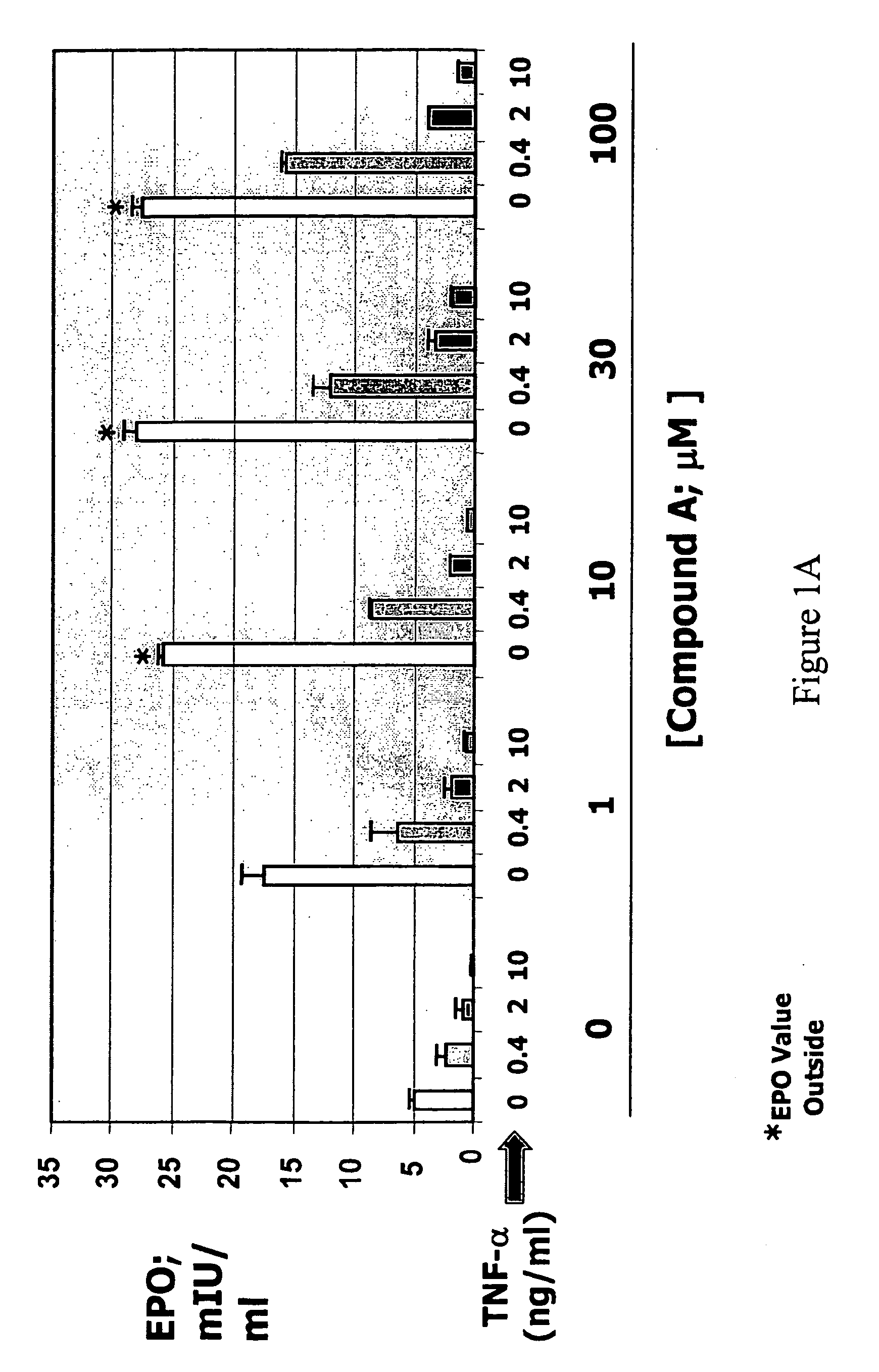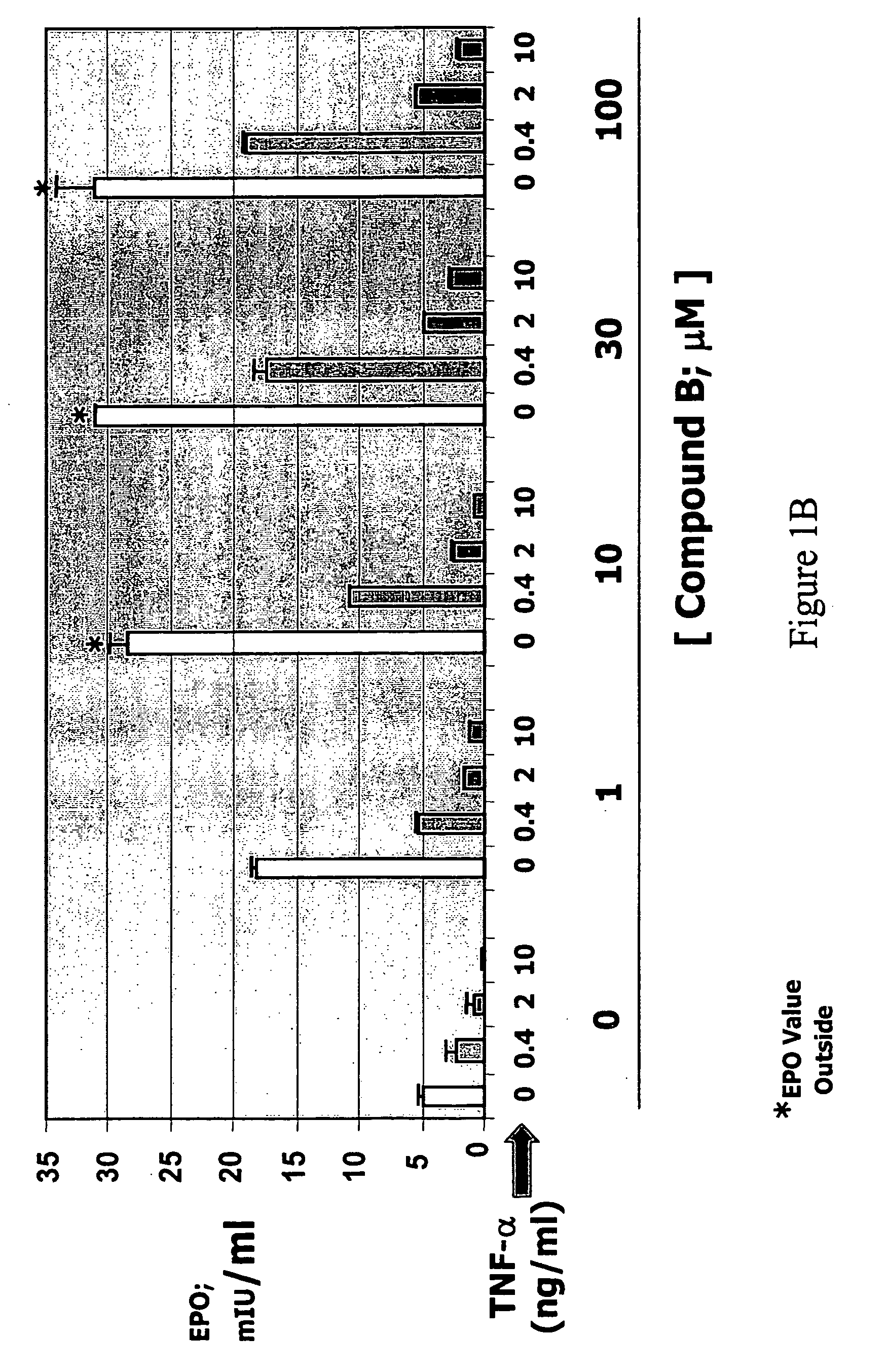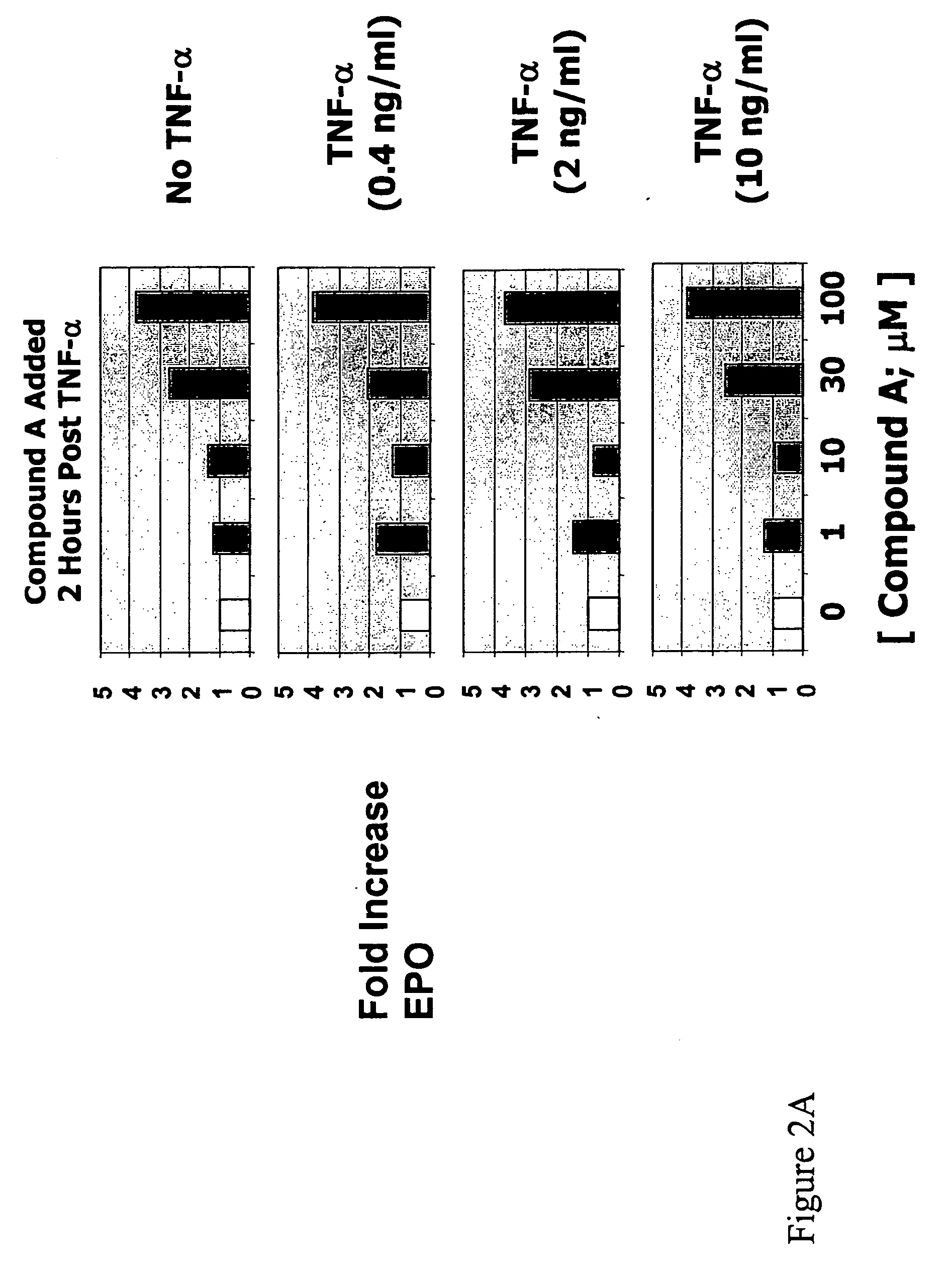Enhanced erythropoiesis and iron metabolism
a technology of erythropoiesis and iron metabolism, applied in the direction of metabolism disorder, immunological disorder, extracellular fluid disorder, etc., can solve the problems of iron deficiency, microcytic anemia and hypochromic red blood cells associated with reducing hemoglobin production and oxygen transport, and requiring hemoglobin production, etc., to enhance epo responsiveness of bone marrow, enhance or complete erythropoiesis, and increase the amount of iron
- Summary
- Abstract
- Description
- Claims
- Application Information
AI Technical Summary
Benefits of technology
Problems solved by technology
Method used
Image
Examples
example 1
Overcoming Suppressive Effects of TNF-α on EPO Production
[0200]Hep3B cells were treated with various concentrations (0, 0.4, 2, 10 ng / ml) of TNF-α in the absence or presence of compound A or compound B for 3 days. Secreted EPO levels were determined using a commercially available ELISA kit (R&D Systems, catalog no. DEP00). In the absence of compound, treatment of Hep3B cells with TNF-α reduced EPO production in a dose-dependent manner. Hep3B cells treated with various concentrations of either compound A (FIG. 1A) or compound B (FIG. 1B) in the absence of TNF-α showed a dose-dependent increase in EPO production. Addition of either compound in the presence of TNF-α greatly reduced the inhibitory effects of TNF-α on EPO production. Overcoming the suppressive effect of TNF-α on EPO production by prolyl hydroxylase inhibition was observed in the presence of low (e.g., 0.4 ng / ml) and high (e.g., 10 ng / ml) concentrations of TNF-α. Therefore, inhibitory effects of the inflammatory cytokine ...
example 2
Overcoming Suppressive Effects of IL-1β on EPO Production
[0204]Hep3B cells were treated with various concentrations (0, 0.4, 2, 10 ng / ml) of IL-1β in the absence or presence of compound A or compound B for 3 days. Secreted EPO levels were determined using a commercially available ELISA kit (R&D Systems, catalog no. DEP00). In the absence of compound, treatment of Hep3B cells with IL-1β reduced EPO production in a dose-dependent manner. Hep3B cells treated with various concentrations of either compound A (FIG. 3A) or compound B (FIG. 3B) in the absence of IL-1β showed a dose-dependent increase in EPO production. Addition of either compound in the presence of IL-1β greatly reduced the inhibitory effects of IL-1β on EPO production. Overcoming the suppressive effects of IL-1β on EPO production by prolyl hydroxylase inhibition was observed in the presence of low (e.g., 0.4 ng / ml) and high (e.g., 10 ng / ml) concentrations of IL-1β. Therefore, inhibitory effects of the inflammatory cytokine...
example 3
Inhibition of TNF-α Induced VCAM-1 Expression
[0208]Endothelial cell adhesiveness for lymphocytes occurs, in part, by endothelial cell expression of vascular cell adhesion molecule (VCAM)-1. VCAM-1 expression in endothelial cells is induced by various inflammatory cytokines, such as TNF-α. To investigate the effect of HT prolyl hydroxylase inhibition on TNF-α induced VCAM-1 expression, HUVEC (human umbilical vein endothelial cells) were stimulated with TNF-α in the absence or presence of various concentrations of compound B or compound C for 1 day. VCAM expression was then measured.
[0209]As shown in FIG. 5, TNF-α (1 ng / ml) induced VCAM-1 expression in HUVEC cells. Addition of compound B or compound C to TNF-α stimulated cells, however, resulted in a does-dependent inhibition of TNF-α induced VCAM-1 expression. This data indicated that methods and compounds of the present invention are effective at reducing VCAM-1 expression associated with the inflammatory cytokine TNF-α. The results...
PUM
| Property | Measurement | Unit |
|---|---|---|
| mean corpuscular volume | aaaaa | aaaaa |
| mean corpuscular volume | aaaaa | aaaaa |
| EPO resistance | aaaaa | aaaaa |
Abstract
Description
Claims
Application Information
 Login to View More
Login to View More - R&D
- Intellectual Property
- Life Sciences
- Materials
- Tech Scout
- Unparalleled Data Quality
- Higher Quality Content
- 60% Fewer Hallucinations
Browse by: Latest US Patents, China's latest patents, Technical Efficacy Thesaurus, Application Domain, Technology Topic, Popular Technical Reports.
© 2025 PatSnap. All rights reserved.Legal|Privacy policy|Modern Slavery Act Transparency Statement|Sitemap|About US| Contact US: help@patsnap.com



